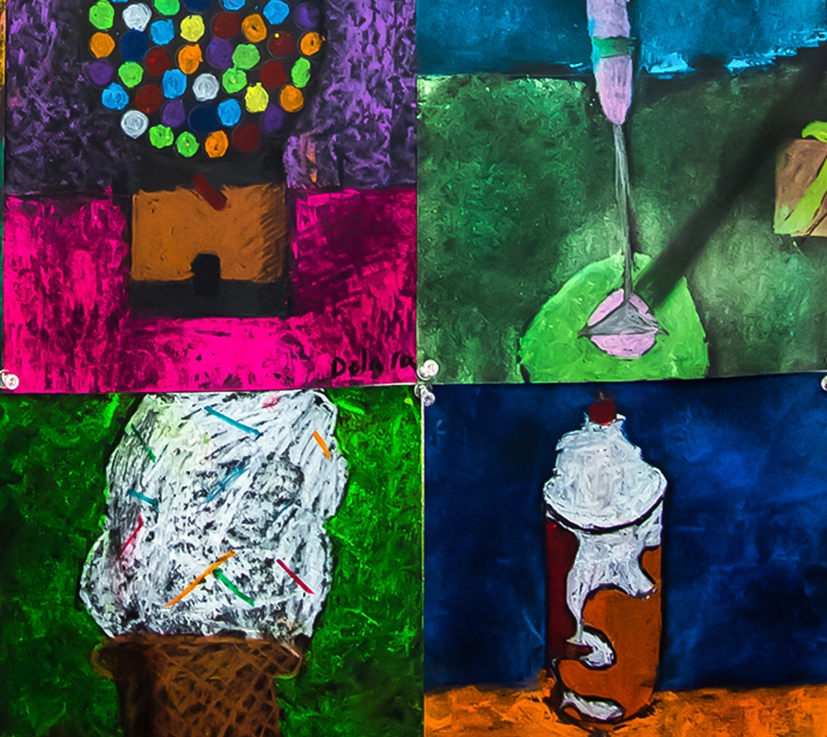Description of the Unit –
The class will observe and discuss the work of contemporary American painter Wayne Thiebaud, focusing especially on his dessert paintings. Using similar characteristics as seen on Thiebaud’s paintings, students will create their own dessert composition in oil and chalk pastels.
Activity statement –
According to the Jim Kempner Fine Art website, “Wayne Thiebaud (b. 1920) is an American painter best known for his still life paintings of edible treats and everyday objects in his singular illustrative style” (https://jimkempnerfineart.com/wayne-thiebaud.php ). His most popular subject matter includes cakes in colorful pastel hues, slices of pie, candies such as lollipops, cupcakes, and interestingly, the streets of San Francisco. His paintings generally include thick, bold applications of stylized color, highly defined shadows, and cartoon-like line. His approach to painting gives his desserts a tactile, textured feel. Students will consider using these same characteristics to create the composition of one sweet treat (or treats) of their own, while also considering the placement of the light source in their design, so as to properly express a form and cast shadow.

Goals – Students should…
Understand:
- Ways in which an artistic medium can create the impression or “feel” of its subjects (such as the texture of frosting on a cake)
- The definitions of form and cast shadows
- How the direction of light affects the placement of form and cast shadows
Know:
- How to create bold lines
- How to exaggerate color
- How to express form and cast shadow
Be able to:
- Identify a Wayne Thiebaud painting and list characteristics of his style
- Identify the direction of a light source by looking at the placement of shadows in a work of art
Objectives – Students will:
- Explore the dessert paintings of Wayne Thiebaud
- Discuss particular characteristics in Thiebaud’s work
- Learn the meanings of form and cast shadows
- Create their own dessert composition in pastels (that includes form and cast shadow)
Resources and materials –
- Exemplars of Thiebaud’s work
- Black cardstock
- Oil pastels in a variety of colors
- Chalk pastels in a variety of colors
- Paper towels for blending
Questions –
- (While looking at Thiebaud’s paintings) What do you notice about the colors?
- What do you notice about the brushstrokes?
- Can you point to visible texture on the painting?
- Can you point to the outlines of the dessert?
- Do you think these paintings are realistic? Why or why not?
- What is a cast shadow? What is a form shadow? (Maybe ask to point to examples of these around the room)
- Where do you think the light is coming from? Why?
- Do the desserts look tempting?
Evaluation – Did students:
- Understand the difference between form and cast shadow and know how to represent them in their artwork?
- Understand the way in which the source of light affects the placement of shadow?
- Exaggerate the use of color?
Informal:
- Student questions
- Group discussions
- Oral responses to essential questions
- At least one finished dessert that includes a form and cast shadow





I LOVE YOUR CREATIVE ABILITIES KEEP STRIVING!!!!!!
Thank you so much, Salome! Sorry for my delayed reply, I was traveling, but it was lovely to come home to your uplifting comment!